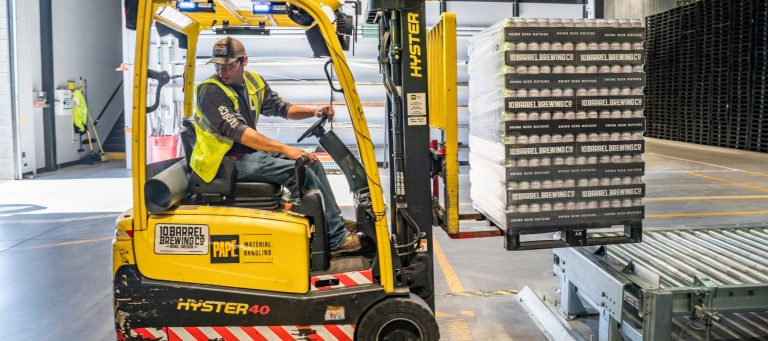Have you had a visit from a safety inspector recently? Or perhaps a visit has been planned already? With safety inspectors conducting a significant number of proactive and reactive workplace visits across Australian jurisdictions (153,862 safety inspections over the 2016-2017 period – Safe Work Australia, Comparative Performance Monitoring Report, 20th Edition, December 2018), and with there being a significant number of safety notices and infringements being issued each year (almost 44,000 nationally in 2016-2017); it is important that workplaces are prepared for a visit from the inspectorate in their workplace.
If you are a workplace Manager, it is essential to understand why the safety inspector is attending your workplace, and how people in your workplace need to support and manage the visit. Employers or employees must have a ‘reasonable excuse’ if they refuse to answer regulator questions or provide information. Legal advice against speaking to the regulator is not a reasonable excuse and cannot justify a refusal to provide information. Requesting more time, written clarification, or time to seek legal advice is within the rights of employers and employees.
Who is a Safety Inspector?
A safety inspector is a representative of your State’s or Territory’s health and safety regulator, appointed to monitor and enforce your workplace compliance against relevant health and safety legislation – with the aim of reducing incidents (and injuries) in your workplace, in order to keep your workers and those impacted by your work, safe. The Regulator is the government agency supporting and enforcing jurisdictional health and safety legislation such as WorkSafe Victoria or SafeWork.
The safety regulators across Australia take various approaches to monitoring and achieving compliance. This is a dual approach which sees the regulator provide both:
(i) support and guidance to workplaces on how they can meet their legislative obligations, while also;
(ii) enforcing compliance and penalties when there have been breaches of legislation.
Not sure who your regulator is, or what health and safety legislation applies to you? Check out this link – Links to each Health and Safety Regulator and Legislation.
Safety Inspector Right of Entry
Safety inspectors have power to enter any workplace with or without notice (note: there may be limits on the power to enter workplaces that are also domestic premises). Typically, inspectors will enter a workplace when:
- responding to an issue raised by representatives of the workplace, contractors, members of the public, etc. – this may be via unsafe practices being reported through the regulator’s Advisory Service;
- after a notifiable incident has occurred [Notifiable Incidents]
- during targeted programs – often the regulator will target either regional areas, specific industries or specific work practices; or
- when requested by the workplace or employee representative to provide guidance.
General Safety Inspector Visits
When visiting a workplace, the safety inspector may make an appointment beforehand, or attend the workplace without notice. When arriving at your workplace, the first thing that the safety inspector will do is show their identification badge and explain the reason for their visit. If there has been a confidential report, or notification of a safety-related issue at the workplace, they do not need to provide any personal identifying information (partly to protect the person making the report to the regulator, who may or may not be one of your workers), but will let you know, and provide a broad overview that there has been a report, or an issue raised.
The safety inspector may observe the general workplace operations and will usually have a particular focus. For example: matters involving bullying and harassment; machine guarding; high risk work; traffic management, etc. Safety inspectors have the power to view and comment on other areas and practices of the workplace beyond the original reason for attendance if they believe there may be a risk to health and safety.
Key Tips to Follow When the Safety Inspector Visits:
- Be respectful to the inspector (people tend to be reactive if treated badly – safety inspectors are no different).
- Have them undertake your visitor sign in process.
- Ensure that they are always accompanied on site by an appropriate organisational representative (i.e. a Senior Manager).
- Provide them with a space to prepare any documentation; e.g. Entry Report, Improvement Notice, (if requested).
- Be concise; listen and directly answer the question(s) that the safety inspector asks (you are entitled to take some time to ensure the answers provided are correct).
- Don’t attempt to hinder their inspection.
REMEMBER you can ask for:
- Further guidance – if you do not understand their question and/or request.
- Additional time to comply with the inspector’s request.
- Reasonable time to seek advice.
- Written clarification of any comments or requests.
If there is a difference of opinion regarding what is reasonable, or, you have concerns about requests made by the safety inspector – remember to be polite and respectful! Know that you can challenge or clarify an inspector’s opinion or decisions via an internal review process in the weeks after the notice has been issued.
Like the police, the safety inspector has explicit protections within the health and safety legislation, so abusive and/or threatening behaviour may see result in personal charges.
When the safety inspector has completed the visit, the safety inspector is required to issue an Entry Report as soon as practicable. The Entry Report will outline the date and time of the visit, the purpose of the visit, a description of the tasks undertaken and observed, their contact details and any additional details of information collected on the day and any notices issued. If there are any errors in the information that is contained within the Entry Report or Improvement Notice(s) issued, you can discuss this directly with the safety inspector. If this does not address your concern, you can appeal through the regulatory Internal Review process.
Notifiable Incidents
If there is a notifiable incident in your workplace, you have a legal duty under the health and safety legislation to advise your safety regulator immediately by phone (once safe to do so, you are not expected to call the regulator before making sure people have received appropriate medical assistance and the site is safe) and in writing within 48 hours. The Advisory Service will notify the inspectorate, who will then either have the Inspector then send a safety inspector to your workplace to investigate.
In addition to notifying your health and safety regulator, you have a legal requirement to preserve the incident site until the safety inspector has arrived or you are otherwise notified by the regulator to resume work. This does not however preclude you from providing help and assistance to injured persons and making the workplace safe. This may mean that your operations have to stop or cease for an extended period of time, this is one of the financial impacts that your organisation should consider as part of the “health and safety” impact.
What is a Notifiable Incident?Incidents that are notifiable vary between state and territory regulators. However, include workplace safety incidents that result in:
|
Safety Inspector Visits and Investigations after a Notifiable Incident
Whenever a safety inspector attends your workplace, the safety inspector will adopt a formal approach.
For all notifiable incidents or serious breaches of legislation, the regulator is likely to investigate in a similar way to a police investigation. This means that they are likely to conduct interviews, collect evidence, and, in some circumstances, remove documentation and hard drives from the workplace. In the instance of a workplace fatality, the police will also conduct their own independent investigation.
Some regulators have different internal departments that perform proactive and reactive workplace visits, a regulator representative may be referred to as an investigator, as opposed to a safety inspector. Although the investigator has a different title, they are appointed as a safety Inspector under the relevant health and safety legislation and therefore have the same powers of entry to the workplace.
When conducting investigations at a workplace, the investigator along with the safety inspector can:
- View all areas of the workplace,
- request to interview employees and managers, and
- ask for further information and obtain evidence by taking photos, documents, measurements, samples and recording interviews or demonstrations.
While it is an offence to hinder an inspector’s investigations it is not an offence to:
- keep track of any evidence obtained by the inspector or comments raised during the visit, in fact it is highly advisable to keep an independent track of the visit, as often it is a stressful time and it may be hard to remember what was discussed or happened on the day. Develop a plan to ensure you have a very clear list of what was provided to the regulator. It is best to seek time to enable proper compliance with any request and to ensure that copies are kept of all documents taken by the inspector.
- For significant incidents (i.e. fatalities and/or permanent disability) – seek legal counsel to understand what approach will best support your business.
Planning for Notifiable Incidents and Safety Inspector Visits
To best prepare both employees/workers and managers alike, a detailed plan for safety inspector visits and regulator investigations is essential. As a business, you should identify and document a process outlining how your organisation will identify and manage a notifiable incident, and potentially a visit by a safety inspector.
Things that you should consider include:
- Who has the relevant seniority and training to contact the regulator and advise them that a notifiable incident has occurred;
- How and who will be involved in communicating to the workforce and management to preserve the site, if required;
- Who will complete the written online report to the regulator;
- Who will accompany the safety inspector if they attend the workplace;
- If the safety inspector attends the workplace, how will you allocate relevant people to be available onsite;
- Will you provide independent advice to employees to assist them in the interview and investigation process;
- Providing assistance or counselling (e.g. via the Employee Assistance Program) to anyone who may have witnessed or been involved in an incident (there is no obligation to keep employees at the workplace to await the arrival of an inspector).
Know Your Rights when in conversation with Safety Inspectors or Investigators
Everyone must know their rights before addressing any requests for information from a safety inspector. However, differences exist between jurisdictions, so caution is necessary.
Regulators can request a person to provide documents or evidence, either verbally or in writing. When asking for documents or evidence, the regulator has to have reasonable grounds to believe that the information will assist in performing their duties under relevant health and safety legislation. It is recommended that you obtain all requests for documents or evidence from the safety inspector or investigator in writing.
Under the Work Health and Safety Act (which includes all Australian states and territories with the exception of Victoria and Western Australia), a person may not refuse to provide information under the belief that the information may incriminate or expose the person to a penalty.
Also, written information requested cannot be used for charges against them, except for false information. Information related to a breach under the Act cannot be used against the individual if provided under coercion. Freely provided information, without a written request, can be used to build a case against the individual personally.
This is the primary reason why all requests for documentation and evidence should be provided in writing.
In Victoria, under the Occupational Health and Safety Act, the rules are different. Although a person at the workplace is required to answer questions from the inspector, the privilege against self-incrimination still applies. An inspector will typically allow a person to seek legal advice if requested before continuing with questioning. Directors, managers, and employees in Victoria can protect themselves by invoking privilege against self-incrimination and requesting time for legal advice.
Employers or employees must have a ‘reasonable excuse’ if they refuse to answer regulator questions or provide information. Legal advice against speaking to the regulator is not a reasonable excuse and cannot justify a refusal to provide information. Requesting more time, written clarification, or time to seek legal advice is within the rights of employers and employees.
Safety Inspector, the take home
Safety inspectors monitor and ensure that businesses operate in accordance with the duties outlined in the relevant jurisdiction’s health and safety legislation. Remember, this legislation is designed to ensure that your workplace continues to take proactive steps to keep your workers safe from harm, aligning with the expectations of each worker and their family when they turn up to work each morning. Therefore, implement a strategy and systems of work for handling a regulator visit. However, remain focused on building a health and safety program that keeps workers and others in the workplace safe at all times.
To do this, ensure that your business has:
- Identified and managed the critical hazards and risks associated with your operations.
- Implemented a health and safety framework to ensure that risks are suitably mitigated, monitored and reviewed.
- Provided all workers with relevant induction and competency-based training.
- Consulted with workers on matters involving their health and safety on a regular and consistent basis.
- Kept up to date with legislative changes relevant to the industry.
- Ensure that systems of work are reviewed and updated.
- Had senior management involved in reviewing and driving safety strategies to mitigate risk.
A proactive, transparent approach ensures legislative compliance and prepares you for managing serious workplace incidents or safety inspector visits.






